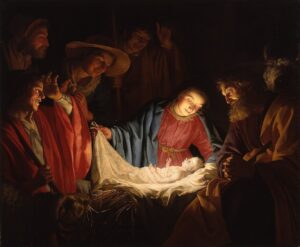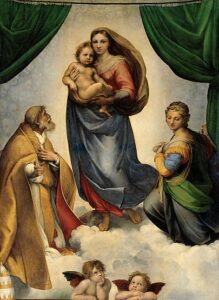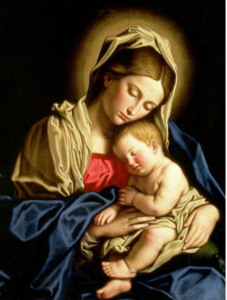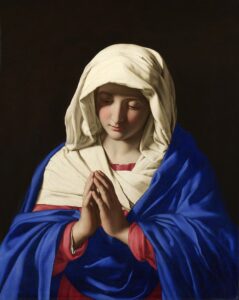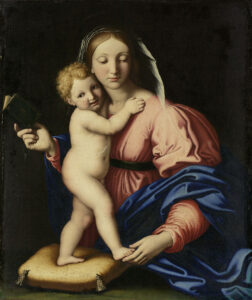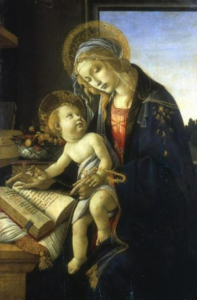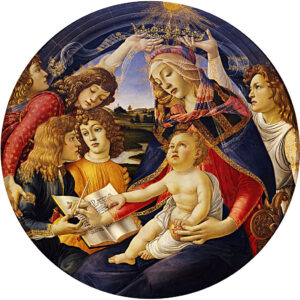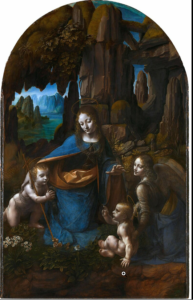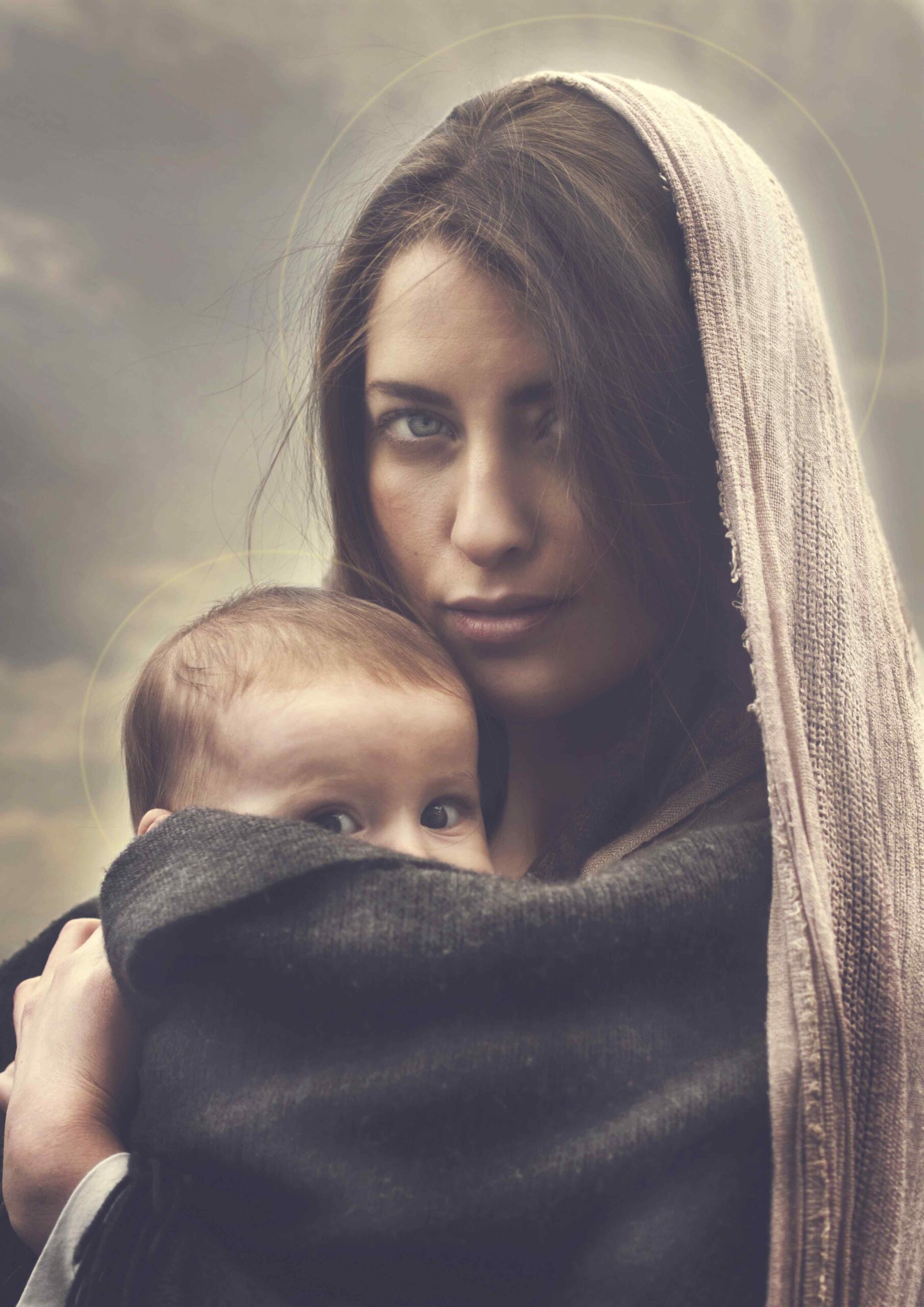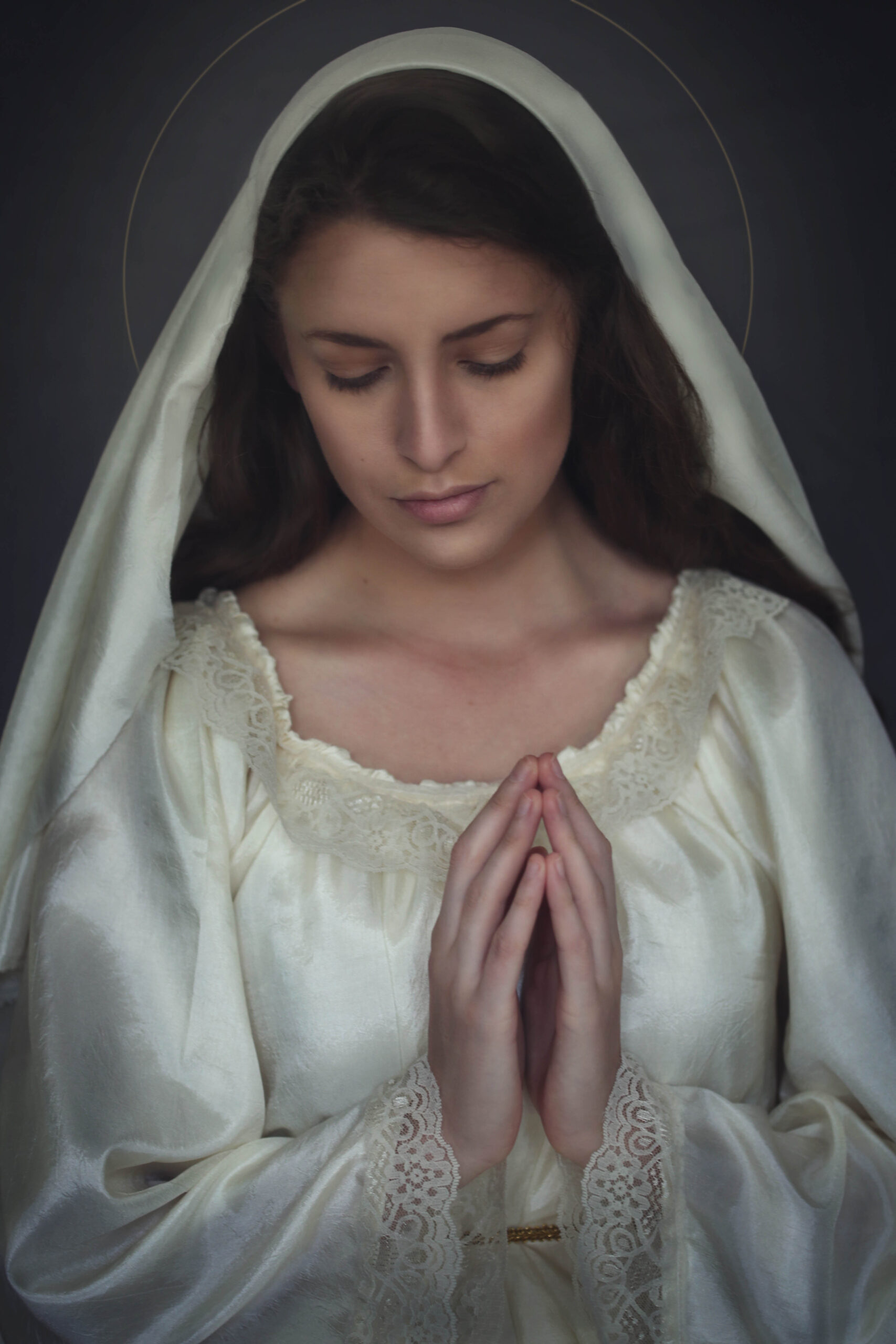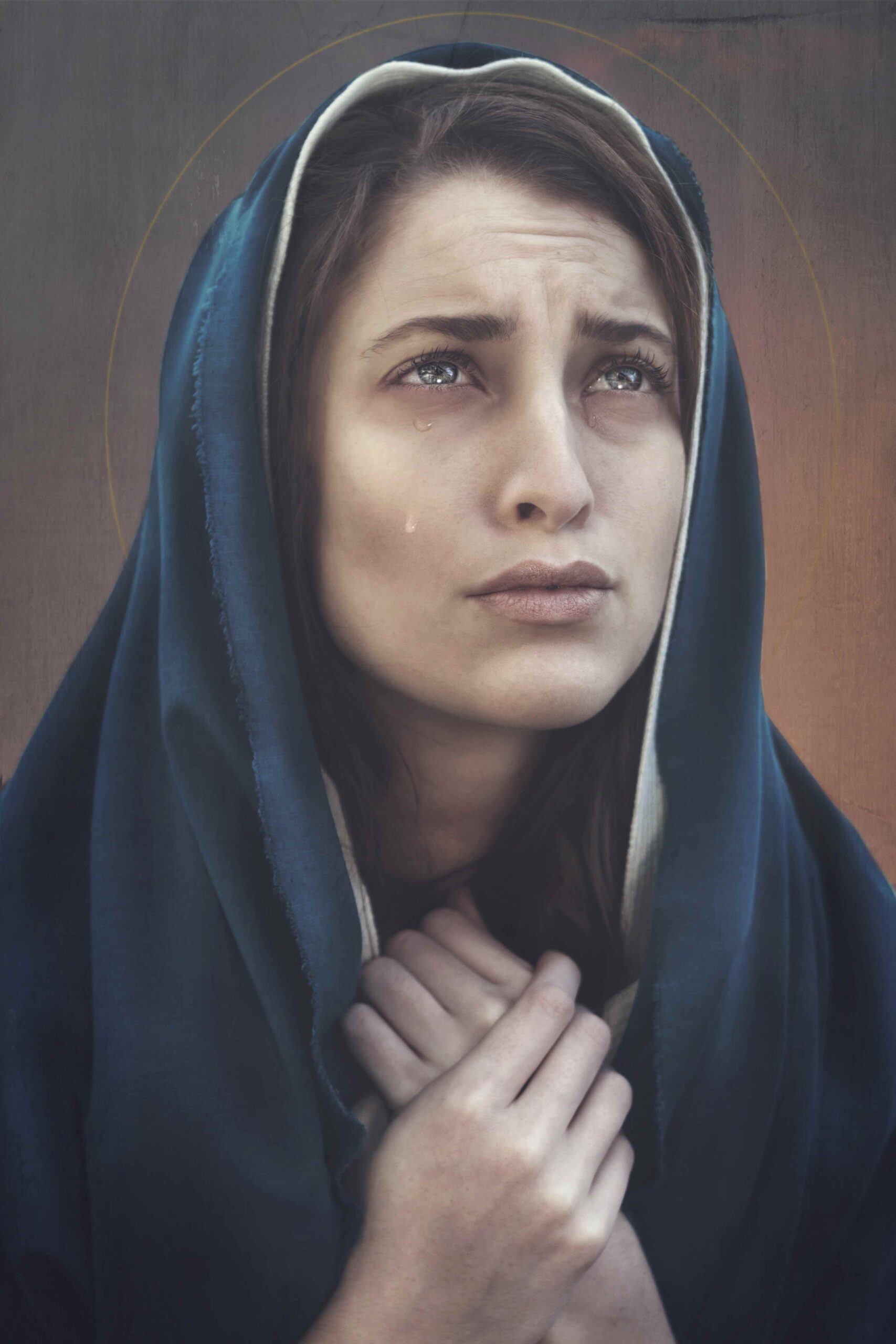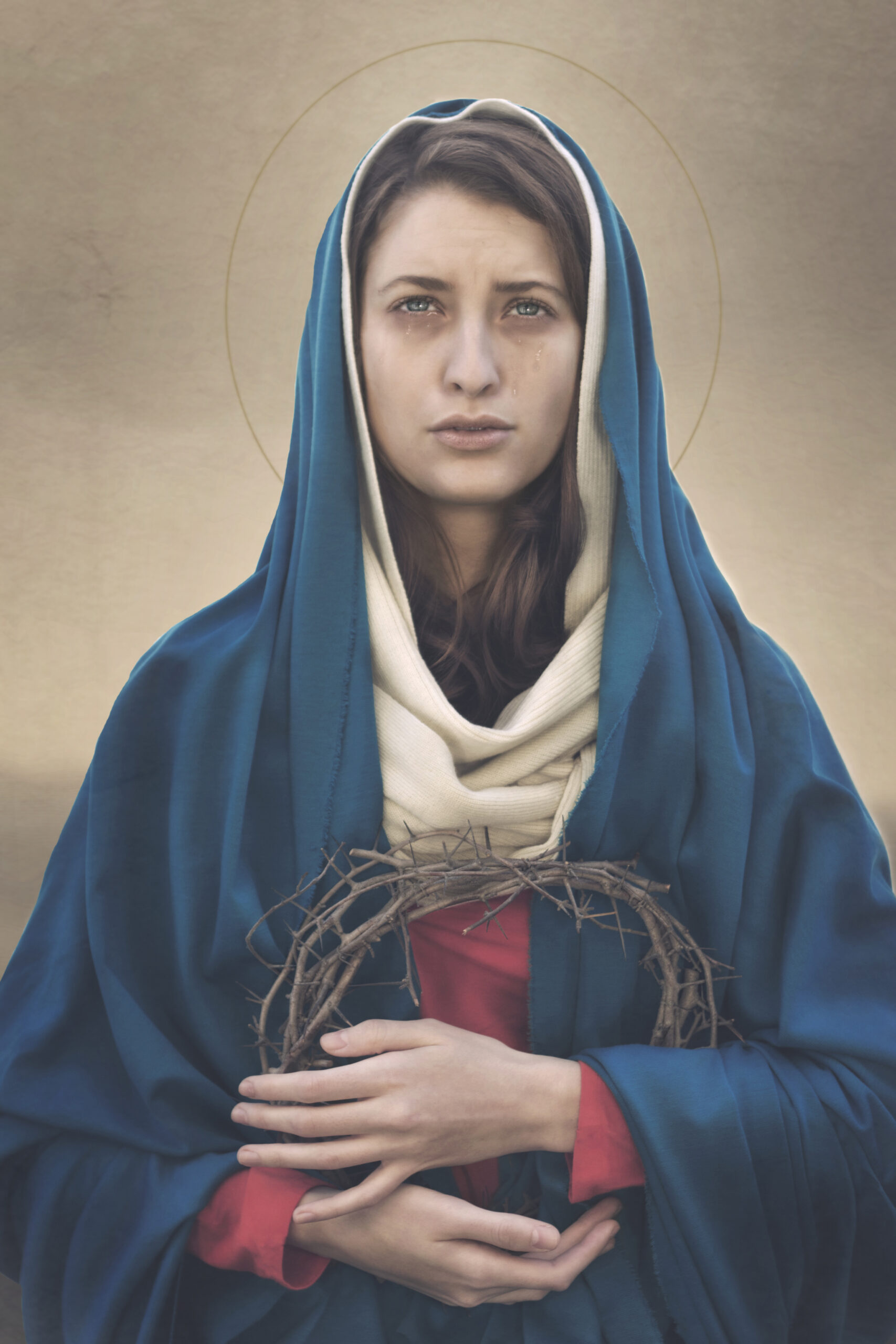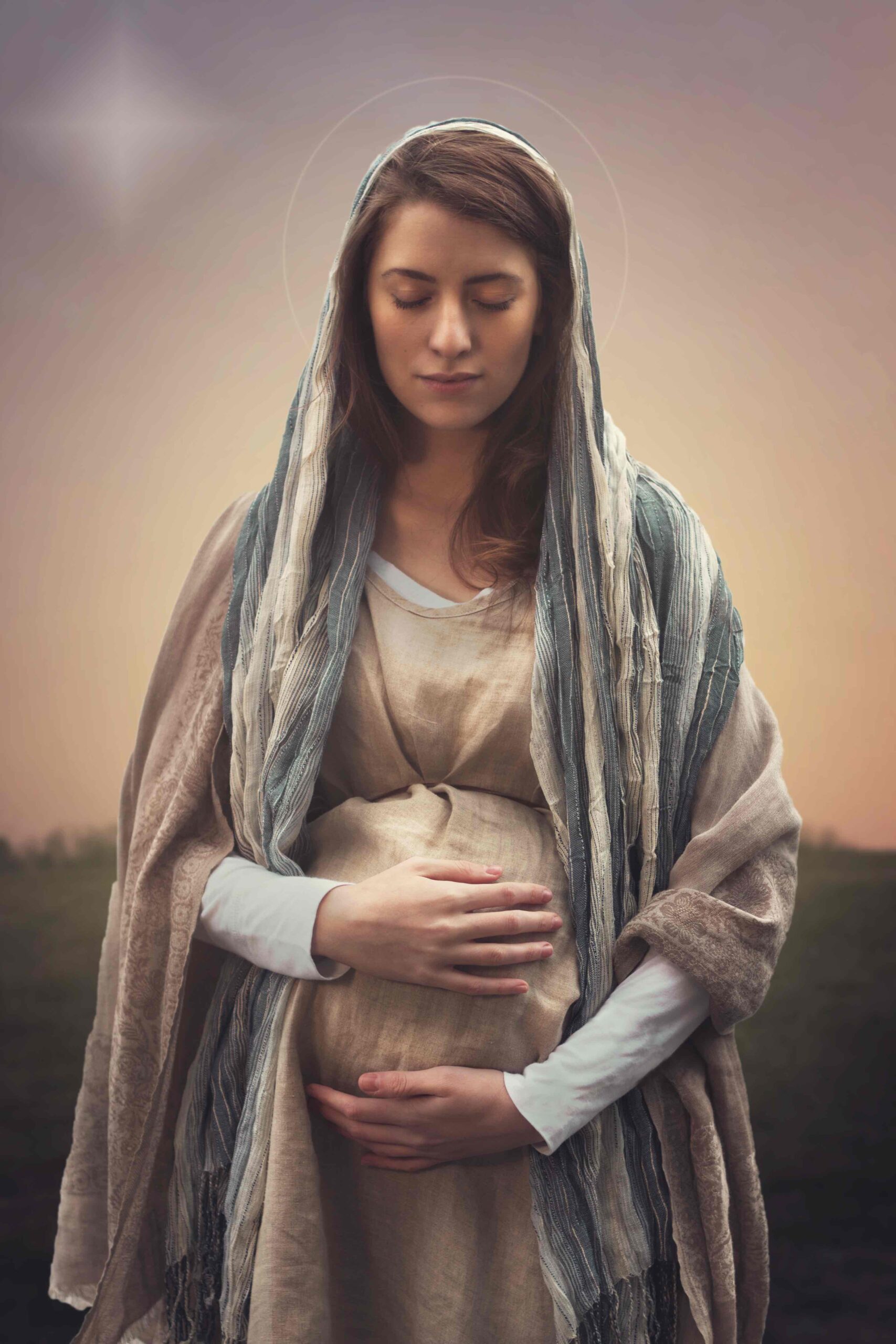Holy Mary
Marian art forms part of the fabric of Catholic Marian culture through their emotional impact on the veneration of the Blessed Virgin.
Art of our Holy Mother Mary to meditate upon.
Adoration of the Shepherds
Gerard van Honthorst 1622
Gerard van Honthorst was one of a small group of Dutch painters who relocated to Rome around 1616. While there, they worked on commissions and studied contemporary works by Italian masters, most notably Caravaggio.
Gerard van Honthorst’s 1622 Adoration of the Shepherds shows clear Caravagist influence through its close frame that cuts all of the figures off below the waist and the important role that light and shadow play in the composition. Parts of the canvas that are not important disappear in deep shadow, and baby Jesus himself is the only source of light, casting a warm glow on the faces of those who look over him. This is likely a direct Biblical reference to Jesus’ statement “I am the light of the world” (John 8:12 and John 9:5).
The Sistine Madonna, Madonna and Child with Pope Sixtus II and Saint Barbara
Raphael 1512
The Sistine Madonna, also called the Madonna di San Sisto, is an oil painting by the Italian artist Raphael. The painting was commissioned in 1512 by Pope Julius II for the church of San Sisto, Piacenza, and probably executed c. 1513–1514. The canvas was one of the last Madonnas painted by Raphael. Giorgio Vasari called it “a truly rare and extraordinary work”.[1]
The painting was moved to Dresden from 1754 and is well known for its influence in the German and Russian art scene. After World War II, it was relocated to Moscow for a decade before being returned to Germany.
Madonna of the Pomegranate
Sandro Botticelli 1487
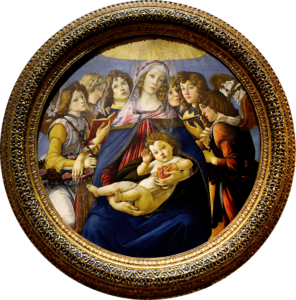 The Madonna of the Pomegranate (Italian: Madonna del Magnificat), is a painting of circular or tondo form by the Italian Renaissance painter Sandro Botticelli. It is widely agreed that Botticelli went through three distinct artistic phases, marked by the subjects of his work rather than any shift in artistic style. During the first of these three phases, he maintained a very moderate, average emotional state throughout the content of his paintings, aptly regarded as the “Medici phase”.[2] During this phase, Botticelli painted several Madonnas, including another large-scale tondo, Madonna of the Pomegranate. Each of them were incredibly maternal in nature, the soft motherly love of the Virgin accentuated by the tenderness between herself and the Christ child. Botticelli famously painted his female figures, especially his Madonnas, with incredibly pale, porcelain-like faces, with light pink blushing across their noses, cheeks, and mouths. This phase in Botticelli’s art was also characterized by the combination of features typically found in court paintings, as well as qualities learned from his study of Classical works. Botticelli juxtaposes the Classical grace of these quasi-courtly paintings with the garb of then-contemporary Florentines
The Madonna of the Pomegranate (Italian: Madonna del Magnificat), is a painting of circular or tondo form by the Italian Renaissance painter Sandro Botticelli. It is widely agreed that Botticelli went through three distinct artistic phases, marked by the subjects of his work rather than any shift in artistic style. During the first of these three phases, he maintained a very moderate, average emotional state throughout the content of his paintings, aptly regarded as the “Medici phase”.[2] During this phase, Botticelli painted several Madonnas, including another large-scale tondo, Madonna of the Pomegranate. Each of them were incredibly maternal in nature, the soft motherly love of the Virgin accentuated by the tenderness between herself and the Christ child. Botticelli famously painted his female figures, especially his Madonnas, with incredibly pale, porcelain-like faces, with light pink blushing across their noses, cheeks, and mouths. This phase in Botticelli’s art was also characterized by the combination of features typically found in court paintings, as well as qualities learned from his study of Classical works. Botticelli juxtaposes the Classical grace of these quasi-courtly paintings with the garb of then-contemporary Florentines
The Presentation in the Temple
Caravaggio 1562-1609
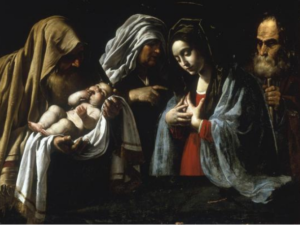 Michelangelo Merisi da Caravaggio, known as simply Caravaggio, was an Italian painter active in Rome for most of his artistic life. His paintings have been characterized by art critics as combining a realistic observation of the human state, both physical and emotional, with a dramatic use of lighting, which had a formative influence on Baroque painting
Michelangelo Merisi da Caravaggio, known as simply Caravaggio, was an Italian painter active in Rome for most of his artistic life. His paintings have been characterized by art critics as combining a realistic observation of the human state, both physical and emotional, with a dramatic use of lighting, which had a formative influence on Baroque painting
Madonna and Child
Giovanni Battista Salvi da Sassoferrato
Giovanni Battista Salvi da Sassoferrato (August 25, 1609 – August 8, 1685), also known as Giovanni Battista Salvi, was an Italian Baroque painter, known for his archaizing commitment to Raphael’s style. He is often referred to only by the town of his birthplace (Sassoferrato), as was customary in his time, and for example seen with da Vinci and Caravaggio.
Madonna
Sandro Botticelli 1444-1510
The Madonna of the Book, The Madonna of the Magnificat and Madonna of the Magnificat, Madonne of the Book and The Annunciation Virgin Mary Archangel Gabriel
Italian – are paintings of circular or tondo form by the Italian Renaissance painter Sandro Botticelli. Madonna of the Magnificat is also referred to as the Virgin and Child with Five Angels. In the tondo, we see the Virgin Mary writing the Magnificat with her right hand, with a pomegranate in her left, as two angels crown her with the Christ child on her lap. It is now in the galleries of the Uffizi, in Florence.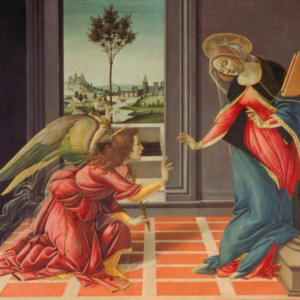
The Presentation in the Temple
Caravaggio 1562-1609
 Michelangelo Merisi da Caravaggio, known as simply Caravaggio, was an Italian painter active in Rome for most of his artistic life. His paintings have been characterized by art critics as combining a realistic observation of the human state, both physical and emotional, with a dramatic use of lighting, which had a formative influence on Baroque painting
Michelangelo Merisi da Caravaggio, known as simply Caravaggio, was an Italian painter active in Rome for most of his artistic life. His paintings have been characterized by art critics as combining a realistic observation of the human state, both physical and emotional, with a dramatic use of lighting, which had a formative influence on Baroque painting
Kristyn Brown - Photographer
A Modern Portrayal of Heaven
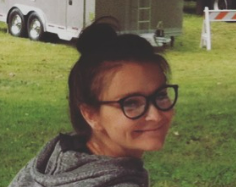
Kristyn was born and raised in Philadelphia, Pennsylvania. She spent most of her childhood and adolescence shooting just for fun. By age 22, she was shooting professionally in Los Angeles, California. After 6 years on the west coast, Kristyn and her family moved back to Philly, where she started The Saints Project-A Modern Portrayal of Catholic Saints. In 2015 she was contacted by The World Meeting of Families to create custom 8ft banners for the youth congress portion of the event. Since then, she has created over 100 images of Saints and the Holy Family. She has been commissioned by several organizations, small businesses and non profits to create images for their companies.
Krystyn Interview – her words:
I started photography very young. I remember “borrowing” my parents’ film camera and using a lot of film to take pictures of my dolls (sorry mom). It was always a part of my life, but I didn’t take it very seriously until I was around twenty-two, when I moved to Los Angeles. Out there, everyone needed photos, so I had plenty of learning opportunities, but I wasn’t feeling fully satisfied by the work. Eventually my husband and I moved back to the Philadelphia area, and I started The Saints Project, which was one of those “light bulb moments.” I always wanted to find a way to fuse my passion for photography and my passion for my faith, and this was the way for me.
I would describe my art as using contemporary methods with traditional style. My goal is is to create an image that appears both modern and classic, blurring the line visually for the viewer. Most people aren’t sure if they’re looking at a photograph or a painting, and that’s how I know I’ve done it right. The tradition of sacred art has had a huge impact on my work and style. I look to the inspiring works of masters like Caravaggio all the time.
The saints are a major inspiration for me. Every saint is so different and interesting, I never lose steam when it comes to getting excited. I love to include the saint I am working on into my prayer life, asking for their intercession for the portrayal and that they be represented in a way that would impact the most people.
My art has a huge influence on my life, maybe not so much in the final product, but in the process. The process of creating a saint image feels like my deepest prayer. I feel I am being what I was designed to be and fulfilling God’s will for me specifically when I am knee deep in the unique creativity of portraying saints. Every image feels like an offering, as well, and I’ll often get to work on a saint that I am asking for prayers for a special need or for a friend.
The blessing of being a Catholic artist far outweigh the challenges. My favorite thing is that I am not in control and the project isn’t about me. It’s about sharing spiritual role models with as many people as possible. Also, I’ll never run out of material because there are thousands of canonized saints, so I never have to worry about dry periods or artist block!
It’s also a blessing that people have responded to The Saints Project with so much enthusiasm. That was something I truly did not expect. I started making the portraits out of desire and love of the saint and my faith—I never intended to share them and definitely never expected for the project to become what it has.
In the future, I am most excited about the release of a project I did with Spirit Juice Studios and musician Amanda Vernon! It was one of those moments where you think, “How did I get here?” I’m also excited to finish my Apostles series, and start a new series of images of Our Lady from around the world.
To learn more about Kristyn Brown and The Saints Project, visit her website here.
